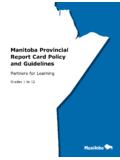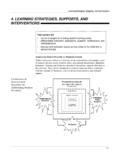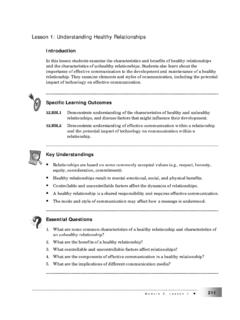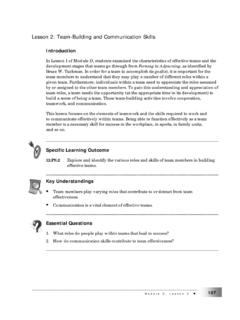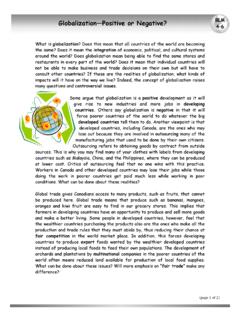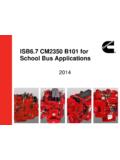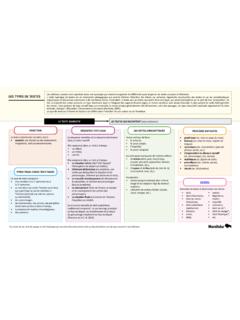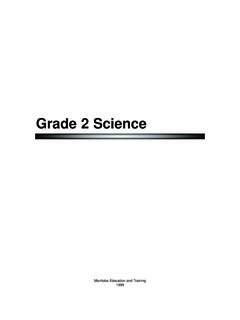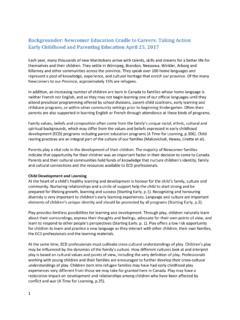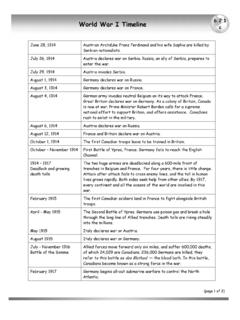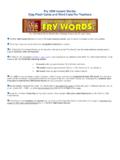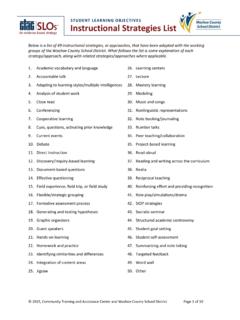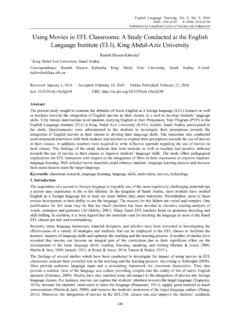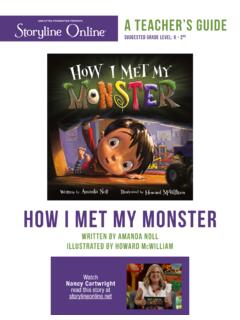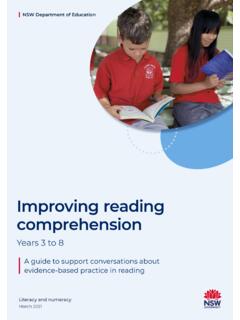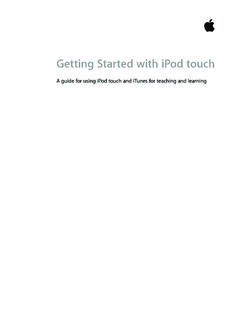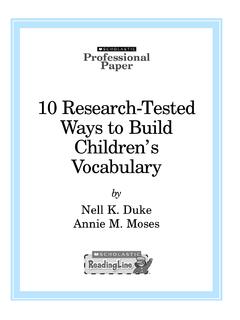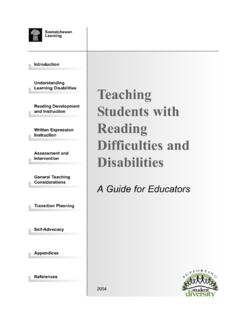Transcription of Supporting Students with Reading Disabilities
1 3-1SU P P O R T I N G IN C L U S I V E SC H O O L SAD D R E S S I N G T H E NE E D S O F ST U D E N T S W I T H LE A R N I N G DI SA B I L I T I E SMO D U L E 3 : SU P P O R T I N G ST U D E N T S W I T H RE A D I N G DI SA B I L I T I E S3 ModuleSupporting Students with Reading Disabilities3-2SU P P O R T I N G IN C L U S I V E SC H O O L SAD D R E S S I N G T H E NE E D S O F ST U D E N T S W I T H LE A R N I N G DI SA B I L I T I E SMO D U L E 3 : SU P P O R T I N G ST U D E N T S W I T H RE A D I N G DI SA B I L I T I E SThis module provides information about the characteristics of Students with Reading Disabilities as well as programming approaches to support these Students .
2 Key Ideas in this Module Reading Disabilities account for the majority of all learning Disabilities . Effective instructional practice for Students with a learning disability is a combination of direct instruction, strategy instruction, and time for rehearsal and practice. Effective Reading requires strength in building meaning using cues and conventions of language, Reading fluency, and Reading comprehension. Good teaching practices work for all Students but are essential for Students with a Reading disability.
3 Two teaching practices that may assist Students with a Reading disability across curricular areas are gradual release of responsibility and Before, During and After (BDA). Listening, speaking, Reading , writing, viewing , and representing are the six areas of language arts that are essential from early childhood through our adult lives. Even though Reading and writing are presented in separated modules, it is important to remember they are closely linked. What Is a Reading Disability? A Reading disability is a learning disability that involves an impairment of Reading accuracy, speed, or comprehension and is significant enough to interfere with academic achievement and/or activities of daily life.
4 Students with Reading Disabilities have average or above average intelligence but experience a disparity between their cognitive abilities and their ability to read. Their difficulties can be unexpected in relation to their age or the amount and quality of instruction they have received. In the Diagnostic and Statistical Manual of Mental Disorders, Fifth Edition (DSM-5), the diagnostic term Specific Learning Disorder with Impairment in Reading is used as outlined in Module 1 for individuals who experience difficulty with word Reading accuracy, Reading rate or fluency, or Reading comprehension.
5 (p. 67, DSM-5) Dyslexia is an alternate term used to describe specific Reading difficulties that result from visual/perceptual difficulties with print that effect spelling, decoding, and word recognition. The term Reading Disabilities , used in this module, encompasses a range of difficulties that include word recognition, fluency, and Reading comprehension. A Reading disability is not a cognitive disability. Students with Reading Disabilities have average or above average cognitive ability. Their difficulty is learning to read.
6 3-3SU P P O R T I N G IN C L U S I V E SC H O O L SAD D R E S S I N G T H E NE E D S O F ST U D E N T S W I T H LE A R N I N G DI SA B I L I T I E SMO D U L E 3 : SU P P O R T I N G ST U D E N T S W I T H RE A D I N G DI SA B I L I T I E S Up to 80% of children with learning Disabilities have difficulty learning to read. (World Summit Learning Disabilities , December 2008) Almost 40% of Canadian youth do not have adequate literacy levels. (Literacy Matters: A Call to Action) Characteristics of Students with Reading Disabilities A student with a Reading disability may experience difficulty in any combination of the following areas: Difficulty mastering letter sounds and vocabulary: Students with Reading Disabilities tend to have difficulty learning letter sounds, combinations of sounds, and vocabulary words.
7 Difficulty monitoring performance: Students with Reading Disabilities are not usually adept at monitoring their own understanding of Reading material. Failure to apply strategies learned in a variety of contexts: The strategies that support successful Reading vary in subject/content areas and also vary from one assignment to the next. Reading a textbook, for example, requires different strategies and skills than Reading a story. Students with Reading Disabilities do not adjust their strategies accordingly. Difficulty in generalization: Students with Reading Disabilities have difficulty transferring concepts that have been learned in one context to another context.
8 Memory problems: Students with Reading Disabilities often demonstrate challenges with memory and have difficulty retaining their understanding from Reading material. Over-dependency: Students with Reading Disabilities tend to be over-dependent on others for direction in their learning. This impacts Reading assignments, which tend to be individual assignments. Approaching a task: Students with Reading Disabilities may have a history of limited success or repeated failure, and they may not approach a challenging learning task with a positive attitude.
9 Instructional Strategies to Support Students with a Reading Disability Good first teaching is essential for Students with Reading Disabilities . What works for Students with Reading Disabilities can work for other Students too. There is no one solution, each student learns differently and the severity of learning needs can vary from mild to moderate to severe. Students with Reading Disabilities require extensive time and practise to learn the skills involved with Reading . Efforts must be intense and prolonged with teaching and Reading 3-4SU P P O R T I N G IN C L U S I V E SC H O O L SAD D R E S S I N G T H E NE E D S O F ST U D E N T S W I T H LE A R N I N G DI SA B I L I T I E SMO D U L E 3 : SU P P O R T I N G ST U D E N T S W I T H RE A D I N G DI SA B I L I T I E Ssessions that take place over a significant amount of time.
10 It is crucial that Students have access to a variety of Reading materials that are meaningful, engaging, and at their level. When educators and/or the student support team select strategies and interventions for Students with Reading Disabilities , they should consider two aspects of learning: the subject-area content that must be mastered and the cognitive processes required to learn. Direct instruction, or explicit teaching , is recommended to teach content. Strategy instruction is the way in which cognitive processes are strengthened.
